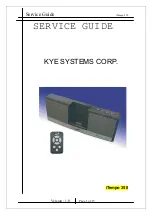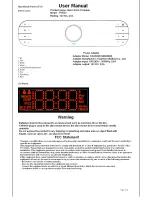
Electrical connection
Low impedance connection
All EVC full-range systems are passive, meaning that the internal crossover/equalizer network
sends low frequencies to the woofer and high frequencies to the compression-driver/
waveguide combination. In addition, the network tailors the frequency response and level of
each individual driver so that the overall frequency response of the loudspeaker is essentially
flat over its intended range of operation. There is no bi-amp option for EVC full-range
loudspeakers.
Figure 6.1: EVC input panel
The screw terminals on the input panel will accept wire gauges as large as AWG 10. There are
two pairs of terminals l and -. A speaker-level audio signal should be connected to one
of these +/- pairs. The other +/- pair can be used to connect one or more additional
loudspeakers in parallel, as long as the combined load impedance does not drop too low for
the amplifier to operate reliably. When the TK-150 audio transformer is installed in an EVC
loudspeaker, the ASC feature will automatically keep the impedance of each loudspeaker in a
safe range. The two pairs of connections marked THRU are wired as pass-through connections
for a separate audio signal.
Optional speaker processing
Once an EVC loudspeaker is installed in a venue a Digital Signal Processor (DSP) will typically
be used to adjust the in-room frequency response. In addition, the DSP should be used to
provide the high-pass filters recommended to protect EVC systems against overdrive at
frequencies below their operating range. Failure to do so could damage the low-frequency
drivers if the system is subjected to high-level signals below its operating range.
6
6.1
en
19
Electro-Voice
Installation manual
2018.01 | 01 | F.01U.345.998
Содержание EVC-1082-00
Страница 1: ...EVC Compact Front Loaded Loudspeakers en Installation manual...
Страница 2: ......
















































